Request Signature Authentication for IVRs Built with Python
Time to read:
This post is part of Twilio’s archive and may contain outdated information. We’re always building something new, so be sure to check out our latest posts for the most up-to-date insights.

For many APIs it is desirable to authenticate requests made to an endpoint. For an interactive voice response (IVR) system API which returns TwiML, the only entity that should likely be allowed access in production is Twilio. This post will cover implementation of request signature validation in a Python IVR web application that uses the Pyramid web framework.
Allowing Twilio Access To localhost
Of the many ways to create a public URL to serve TwiML to Twilio, ngrok is one of the simplest. ngrok will be used for this tutorial and is available here. Once ngrok is downloaded and unzipped, the following command should be run from the directory where it is located:
When the above command is run in the terminal this output should appear:
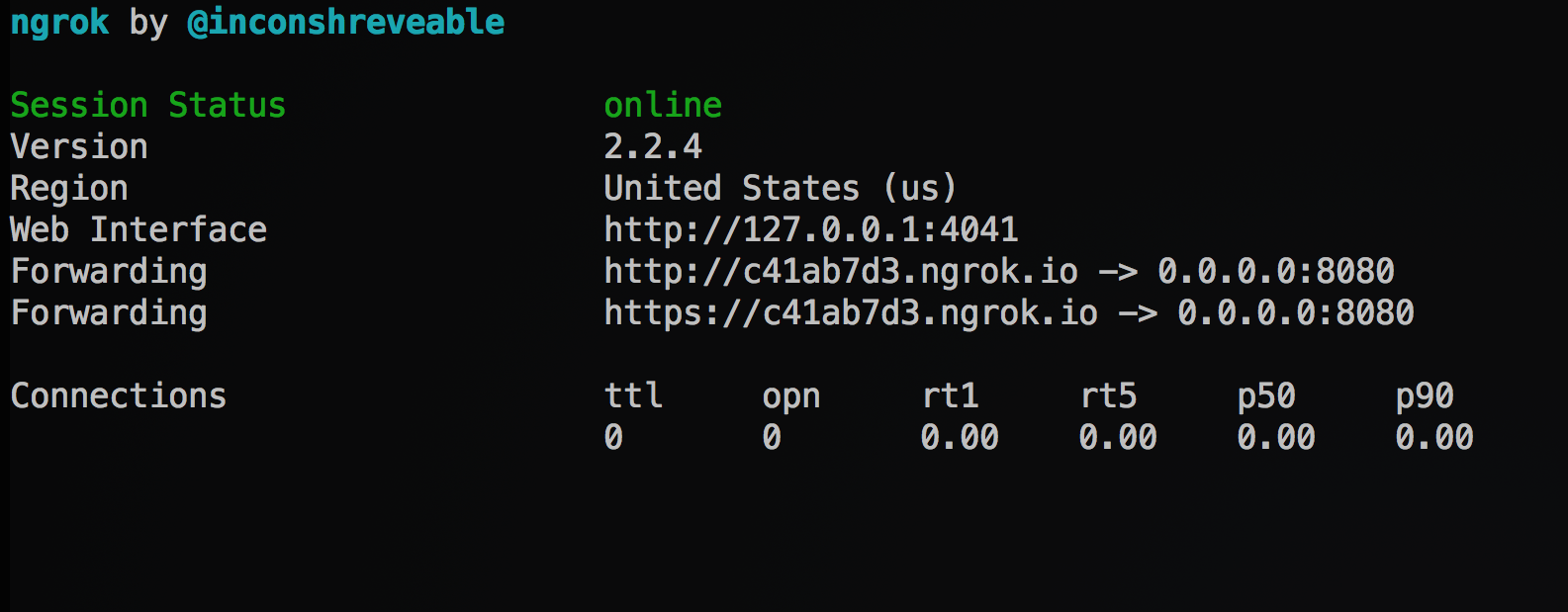
For this demo the HTTPS link will be used. Copy it, and we’ll paste it in the next section.
Setting Up The Twilio Account
To follow along with this demo a Twilio account is required, as the auth token associated with the account is an integral part of request validation. A Twilio account may be created here.
Once logged into a Twilio account, navigate to the phone numbers section and select the phone number that will be used for this demo. Then set the incoming webhook on its configuration page like so and ensure the trailing slash is included:
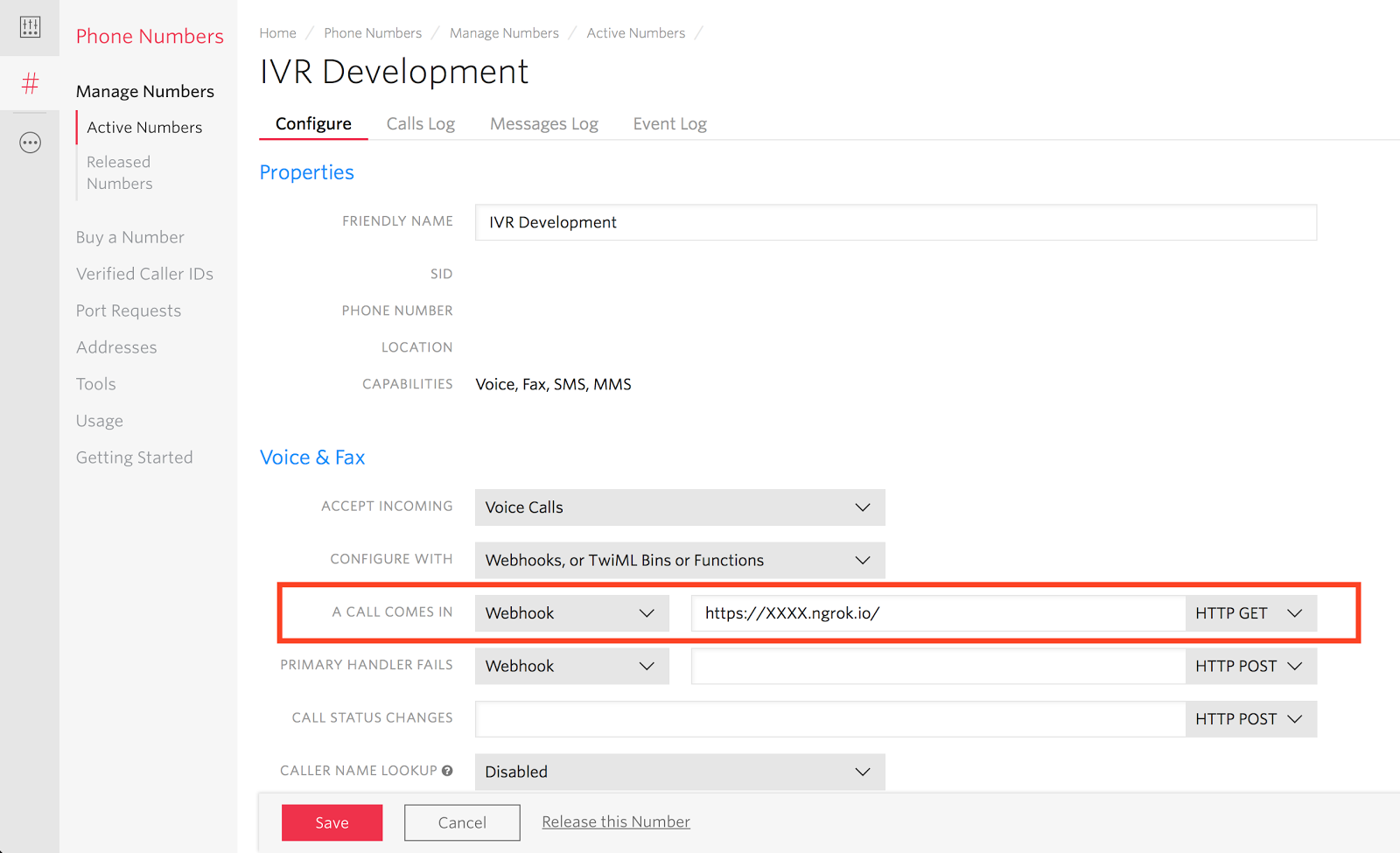
The “Common Stumbling Blocks” section below explains the trailing slash inclusion.
Proceed to the console dashboard to obtain the account’s auth token, which is circled below.
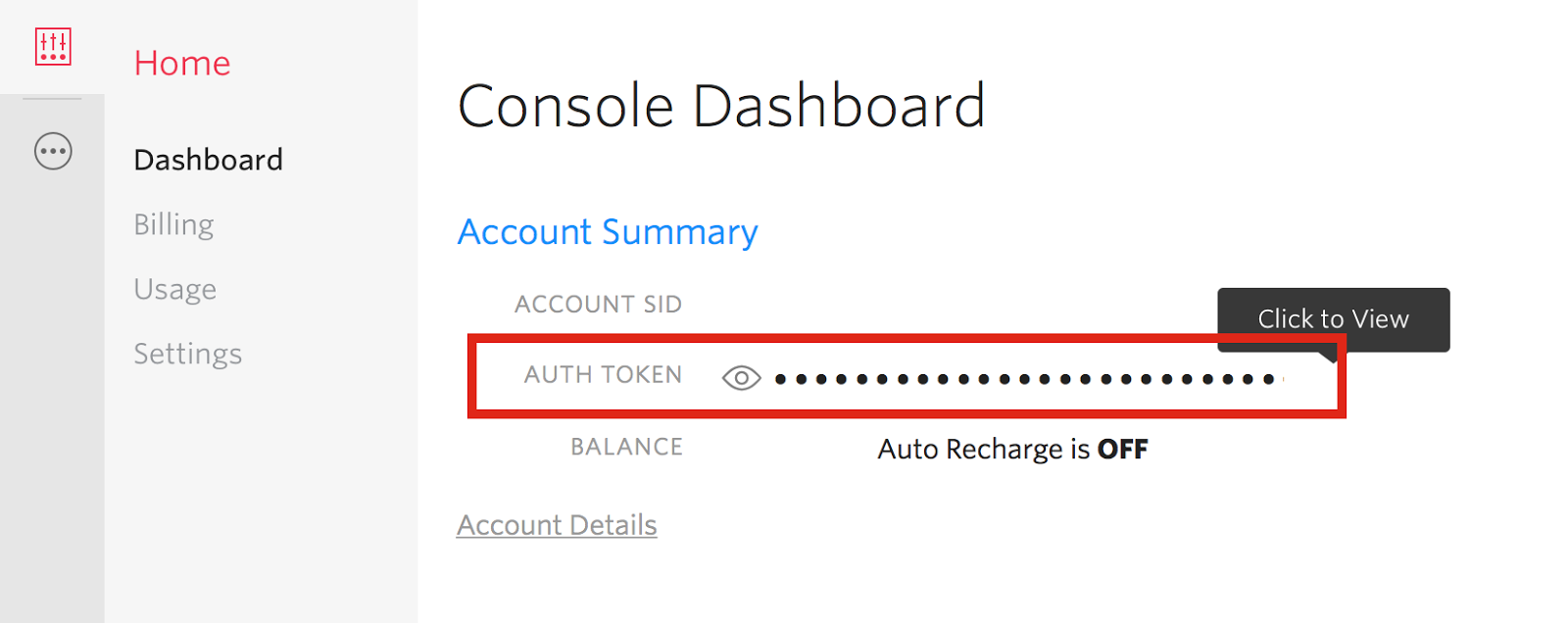
Setting Up And Serving The Demo App
Now it’s time to setup and serve the demo app with the following commands:
Note that the use of a TWILIO_AUTH_TOKEN environment variable is to prevent inclusion of this sensitive information in a config file or source code, where it may be accidentally version controlled. In production systems, a more robust solution for safely including the auth token in a Twilio app may be desirable.
The app should now be available to Twilio and calling the phone number configured in the previous section should result in the following output in the terminal serving the Pyramid app:
For additional information on building applications in Python with the Twilio Voice API, see the quickstart documentation.
How To Spot A Fake Request

When the webhook configured to handle incoming phone calls receives a request from Twilio, the request header will contain an X-Twilio-Signature. This value, along with the account’s auth token is all that is necessary to determine if a request actually originated from Twilio.
Note: The process by which Twilio generates this header value is delineated here.
In determining if a request to a certain endpoint should be allowed, Pyramid takes two concepts into account: authentication and authorization. Authentication may be thought of as checking if the requester is who they claim to be, and authorization may be thought of as checking if the requester has permission to do what they are attempting.
Verifying request signatures is an authentication concern and should be handled via the Pyramid app’s authentication policy. Pyramid includes no authentication policies which cleanly allow for only validation of Twilio request signatures. They all center around a userid and facilitate the creation and usage of sessions. Pyramid’s AuthTktCookieHelper comes close to a good fit, but it provides a lot of extra functionality that is not necessary for simple, stateless request validation.
Thankfully, Pyramid makes it easy to define and include a custom authentication policy. A canonical authentication policy should implement the IAuthenticationPolicy interface and define all of its methods; however, doing so will result in a far more fully featured policy than is necessary for this demo.
Note: Twilio also supports HTTP basic authentication and Pyramid includes a BasicAuthAuthenticationPolicy out-of-the-box. This tutorial focuses only on digest authentication which may be preferable as it does not require the inclusion of credentials in every request URL where they may be susceptible to interception.
The custom TwilioSignatureAuthenticationPolicy defined for this demo contains an
effective_principals method definition. This is the only method Pyramid requires for an authentication policy to be compatible with the ACLAuthorizationPolicy.A Pyramid app will call the authentication policy’s
effective_principals method for each HTTP request to one of its endpoints, making this a convenient location to include the Twilio RequestValidator.
The access control list of the root context defined for this demo app’s views only allows the "view" permission to the Twilio security group:
If the signature generated by the RequestValidator does not match the X-Twilio-Signature attached to the request, then the authentication policy will not include the Twilio principal in its list of effective principals and the requester will be denied access to any endpoint requiring “view” permission.

Common Stumbling Blocks
The URL passed to the RequestValidator.validate method must be identical to the one used by Twilio. Concerns such as trailing slashes and request URI schemes – either http or https in the case of Twilio – must be taken into account.
By default, the Pyramid request.url method will generate a URL ending in a trailing slash for the root URL whereas ngrok displays the root URL without one:
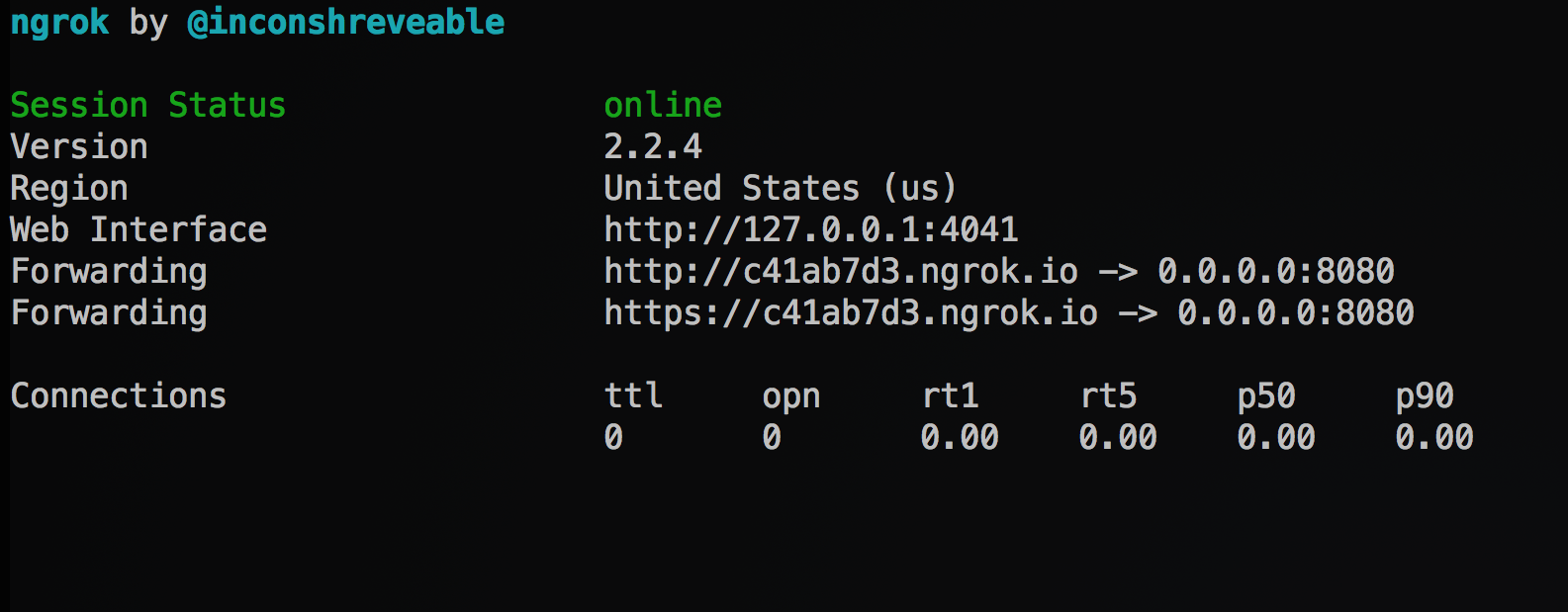
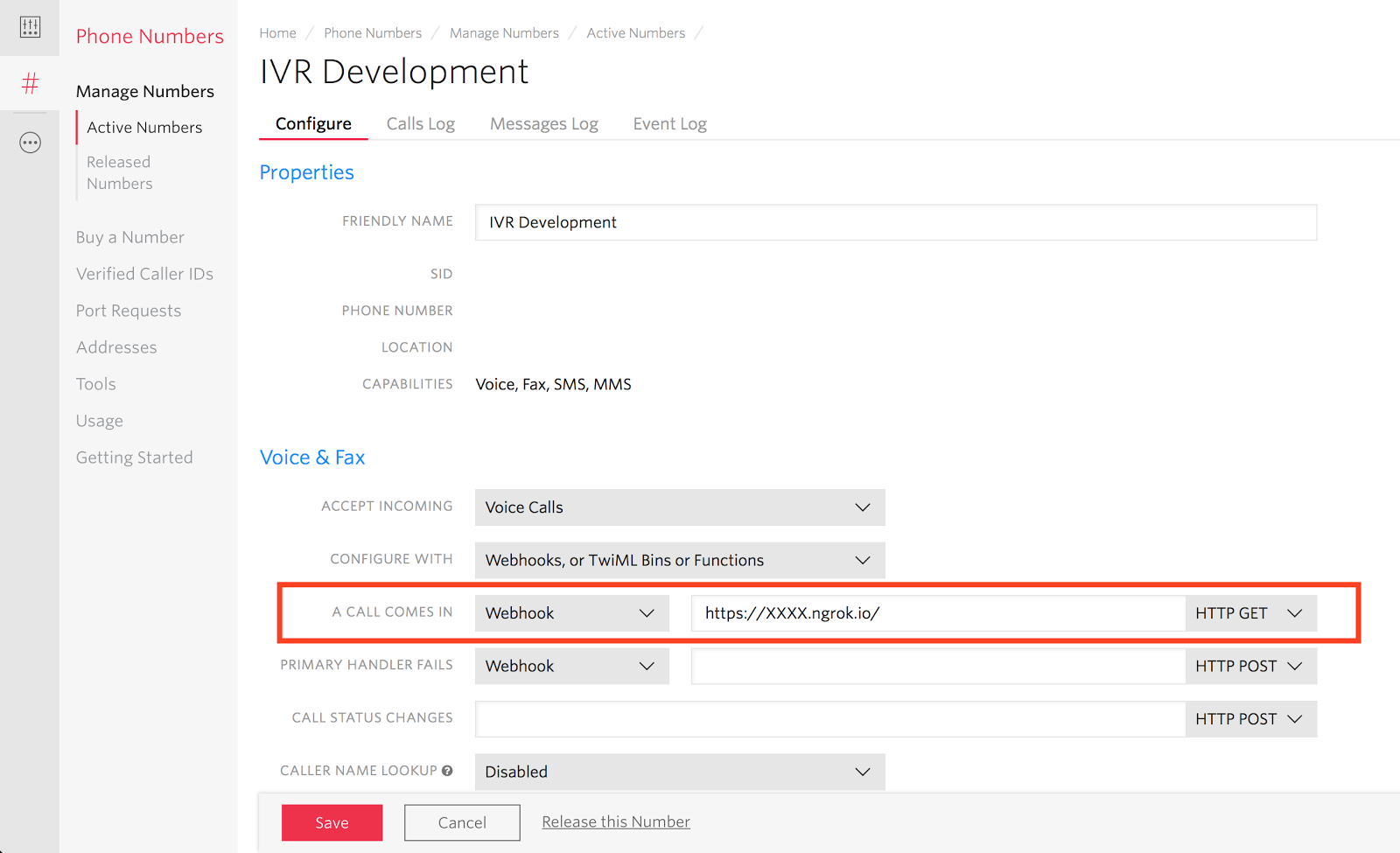
If the Pyramid application that has been configured to serve as the call handler sits behind a load balancer, or any service which terminates TLS, it is critical that these lines appear in the app’s configuration file. Failure to include them will result in calls to Pyramid’s various URL generation methods returning URLs with the incorrect scheme (i.e. http://ivr.example.com instead of https://ivr.example.com).
Another point to remember for GET requests is that Twilio passes various query string parameters when hitting the webhook; however, for POST requests this information resides in the request body. This may be a stumbling block for Pyramid users, as the widely used request.params property merges the query string params with the request body for convenience. Ensure that for validation purposes, the request.POST property is used instead. This property will return an empty dictionary-like object on GET requests, avoiding interference with validation. Below is the behavior of request.POST during a HTTP GET:
Error Handling
In the event that a problem arises with the API attempting to serve TwiML either due to request validation failure or some other reason, Twilio will read a stock error message to the caller and end the call. By default the caller hears:
“We’re sorry, an application error has occurred. Goodbye.”
It may be desirable to handle errors in a custom manner and, for example, forward callers to a call center in the event of an exception with the API. Pyramid provides a set of view decorators to make catching and handling errors fairly simple. In this example, custom TwiML will be returned and the caller will be redirected to a call center for assistance:
The above code defines views to handle 403, 404, and 500 errors. In the event one of these errors occurs, the custom message defined above will be read to the user. It is important that the status code is set to 200, as a failure to do so will result in Twilio ignoring the TwiML we send and defaulting to the stock error message.
Closing Notes
For additional information on building applications in Python with the Twilio Voice API, see the quickstart documentation.
If any issues are encountered while attempting this tutorial, please note them in the GitHub repo issue tracker so they can be resolved in a timely manner.
My contact information is available on https://patrick.yevsukov.com/ and
my GitHub profile is https://github.com/patrickyevsukov/.
Related Posts
Related Resources
Twilio Docs
From APIs to SDKs to sample apps
API reference documentation, SDKs, helper libraries, quickstarts, and tutorials for your language and platform.
Resource Center
The latest ebooks, industry reports, and webinars
Learn from customer engagement experts to improve your own communication.
Ahoy
Twilio's developer community hub
Best practices, code samples, and inspiration to build communications and digital engagement experiences.


